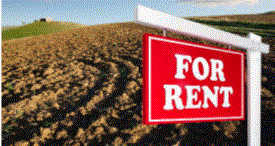Greening through regulation
FARMERS’ PLACE IN THE EU’S GREEN ECONOMY
FIRST INTRODUCED IN 1962, the European Union’s Common Agricultural Policy (CAP) is a system that implements agricultural subsidies and other programs. Every year, CAP provides some €50–60 of funding for agriculture. The money is spent on Direct Payments (€41–43 billion), Market measures (€2–5 billion), and Rural Development measures (€5–10 billion). While the CAP is a good idea in theory, many criticize it for its complexity, and for the fact that it leads to the squandering of funds by those who least need them.
HOW CAP WORKS
Under Direct Payments, farm businesses receive an annual Direct Payment per hectare, explains Roger Waite, European Commission spokesman for Agriculture and Rural Development. Certain rules on environmental standards must be respected, though, including those regarding animal welfare norms, nitrate management, and keeping land in good agricultural and environmental condition. Those who do not respect the rules can lose all or some of their Direct Payment.
In the past, the amount provided per hectare was based on historical production references. In 2013, however, a reform agreed that Member states should move towards a regional or national flat rate per hectare.
Another new element of the reformed system provides direct payments for new young farmers (under the age of 40) entering the sector for the first five years, says Waite. This is in addition to the installation grants available under the rural development programs.
GREENING PAYMENTS
Since its inception, it has undergone several reforms. In 2013, for instance, the introduction of a Greening Payment, which also falls under Direct Payments, where 30 per cent of national funding is made available to subsidize farmers for the implementation of sustainable farming practices and the improvement of natural resource usage.
The Greening Payment requires all farm businesses above 20-30 hectares to respect additional requirements including: the maintenance of permanent pasture, which is important for carbon sequestration; crop diversification measures, which state that farms must grow at least three different crops; and keeping five per cent of the farm as an Ecological Focus Area in order to address biodiversity loss.
That last point isn’t really practical, though, says Belgian dairy farmer Petra Hillewaere-Verhaeghe. Farmers, she says, need their land for production, and it is difficult to spare any for ecological purposes. Hillewaere-Verhaeghe and her husband do set aside land for birds to promote ecological biodiversity, and she confirms that payments for doing so are worthwhile. However, she says that the paperwork is time consuming and unnecessarily complex.
For Rural Development programs, Member States receive funding for a seven-year period from 2014–2020, and a variety of options for them, including two environmentally specific priorities. They are: fostering, preserving and enhancing ecosystems related to agriculture and forestry; and promoting resource efficiency and supporting the shift toward a low-carbon and climate-resilient economy in the agriculture, food, and forestry sectors.
LINKING PAYMENTS TO THE ENVIRONMENT
In the 2013 Reform, this idea was further enhanced with the introduction of “Greening” requirements. The new requirements dictate that 30 per cent of the Direct Payments must be linked to using environmentally friendly agriculture practices. The purpose is to limit monocultures, enhance biodiversity, and improve carbon sequestration on grasslands.
Some of the requirements don’t make sense, though. In order to fulfill greening conditions, farmers must list the crops they will plant following harvest in their application for direct payments. But planting isn’t always the best course of action, says Polish agricultural journalist Karol Bujoczek.
“Last year, there was a drought in Poland and it didn’t make any sense to grow them,” he explains. “But they had to do that — to put seed in the ground to fulfill the regulation. They would like to have some flexibility on that.”
Phil Hogan, EU Commissioner for Agriculture and Rural Development, defended the requirements, though, pointing out that there are 19 different options provided for Member States in terms of crop diversification. “There’s considerable flexibility for Member States and regions to implement equivalent measures in terms of meeting the objectives on greening, if they decide to take them up,” he said. “Some countries and regions did not opt for equivalence measures in terms of growing protein crops. We give that flexibility to Member States and regions, if they don’t want to take them up, well, I can’t do much about it.”
Complaints about the interpretation and translation of greening regulations have also surfaced. Hogan agrees that there has been some difficulty with interpretation, including with the definitions of buffer strips and hedgerows. But those, he says, were addressed as soon as they came up in 2015. Following that, applications were extended by one month to account for the change in circumstances.
FAIRER PLAY
As long as the CAP has been around, it has drawn criticism for its complexity and the stress and anxiety it causes EU farmers. Perhaps the most frustrating aspect is the fact that farmers are penalized for errors in their applications. The penalty is a cut to their direct payments. “Farmers apply for their entitlements in good faith,” says Hogan. “For many of them, it is a vital part of their income.”
To help address the stress of penalties drawn for errors made, the Commissioner recently introduced a fairer “yellow card” system for first-time mistakes. “This should hopefully end the stress and anxiety that many hard working farm families feel when filling out detailed forms,” he concluded. “To treat an honest mistake as an “offence” is not in the spirit of fair play.”
Hogan hopes the new system will end the stress and anxiety that farm families feel when filling out detailed forms. •























